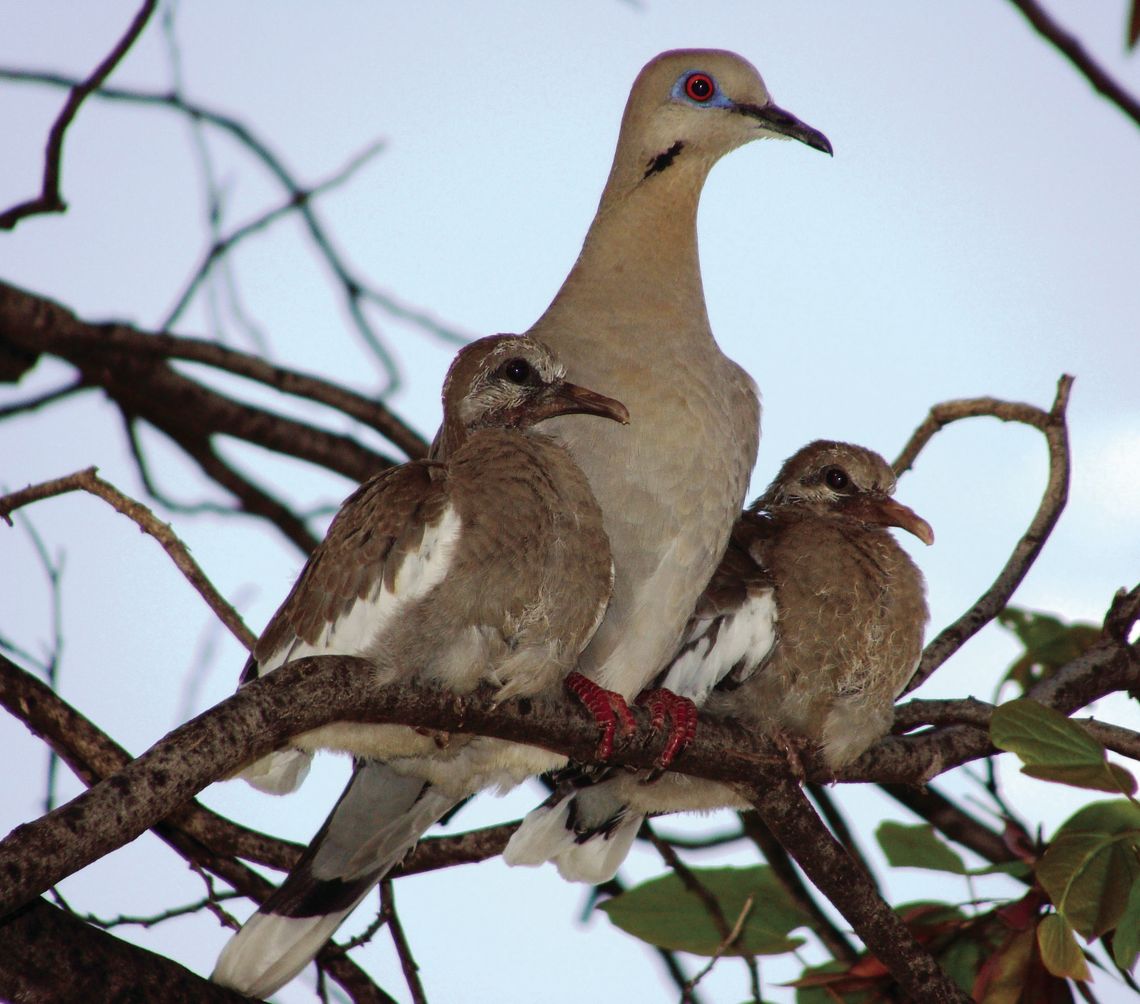“Just like the white-winged dove…” These lyrics were made famous back in 1982 when Stevie Nicks (of the band Fleetwood Mac) released the single “Edge of Seventeen” from her debut solo album titled “Bella Donna”. So popular was this song that it reached #11 on the Billboard Top 100 that particular year. One has to wonder whether Nicks could have possibly understood the impact of those lyrics on a young naturalist. “… sings the song that sounds like she’s singing who, who, who”.
The White-winged Dove (Zenaida asiatica) is a large species of dove whose natural range lies primarily in Mexico. It can also be observed in the United States in a slim line from southern California eastward to southern Florida. In Texas, it is a summer migrant in the Panhandle but occurs year-round in the Big Bend, Edwards Plateau, Coastal Prairies, and Tamaulipan thournscrub eco-regions. Interestingly enough, at one time, this species could be observed in Texas only in the southernmost tip, but over the past several decades it has dispersed throughout the state.
At first glance, this large species is somewhat drab in coloration.
It has grayish brown upper and underparts with a distinctive large white patch on the outer edges of its wings. These distinctive white patches on the wings are where this species common name is derived from. It also has smaller, less noticeable white patches on the on the relatively short and rounded tail. The head, aside from the brilliantly colored orange-red eyes surrounded by blue skin is colored like the rest of the bird. The bill is dark blue, and only slightly curved, while the throat is grayish and typically unmarked. The legs are comparatively short and red colored.
With a body length of about twelve inches and a wingspan that approaches eighteen inches, it is the second largest species of dove that can be encountered in Texas.
The White-winged Dove is a gregarious species, commonly observed in large groups.
It has been reported that these groups can number in the thousands in certain areas in the west, although groups of more than twenty are rarely encountered in Texas. They feed almost exclusively on grains and other seeds, although fruits from cacti and trees are occasionally accepted. The flight pattern is easily recognizable as it is a direct path with strong and rapid wing-beats.
The strength of the wingbeats is often heard in the sound of whistle as the bird flies by.
These social birds pair up during the breeding season, with the male and female remaining monogamous during such time. The nest is placed either near the ground in various cacti plants or shrubs, or more commonly, in trees up to thirty feet above ground.
The nest is made up of grasses, sticks and stems. More often than not, the male gathers the materials while the female is charged with the nest building. The two (rarely three) eggs are medium-sized (just over one inch in length) and unmarked and cream-colored. These eggs hatch in less than two weeks after the males and females alike take turns at incubating them. After hatching, both sexes continue to tend to the helpless young until they leave the nest just two weeks after hatching. Juveniles are colored similar to the adults, and up to three broods per year have been recorded.
White-winged Doves have been reported to fly over twenty miles to obtain drinking water. This is another species of bird that has adapted quite well to human habitation, utilizing man-made cattle tanks to supplant the need for natural water courses. The use of birdbaths and bird feeding stations with small seeds will attract this common species of dove to your yard for closer observation.





















